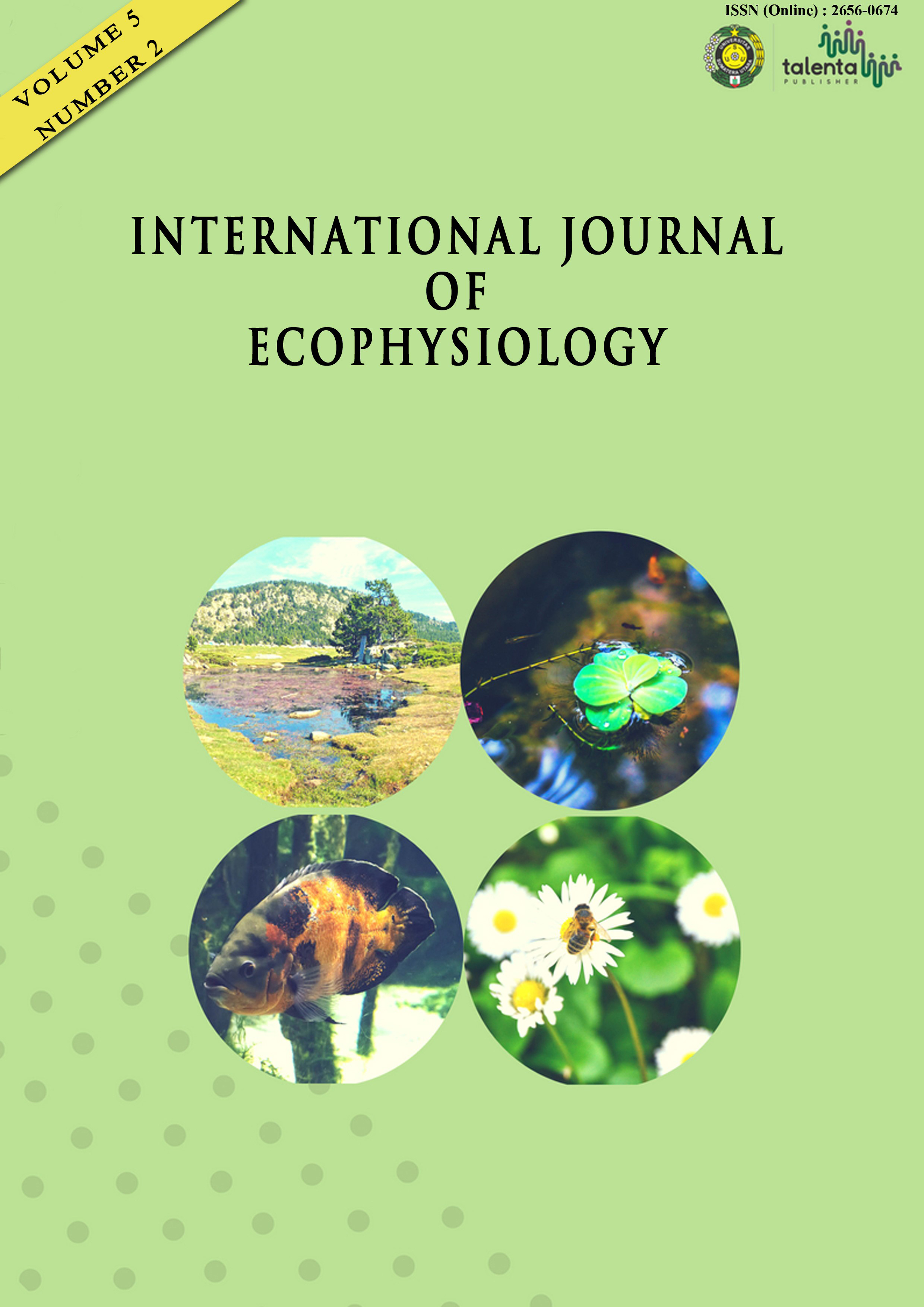Antioxidant Activity Assay of Eucalyptus pellita Leaf Extract
DOI:
https://doi.org/10.32734/ijoep.v5i2.13715Keywords:
Antioxidant Activity, Leaf Extract, Eucalyptus pellita, Phytochemical ScreeningAbstract
In pharmacy, eucalyptus leaves are used for various pharmacological activities because they contain phenolic compounds. This study aims to detect phytochemical compounds and test the antioxidant activity of Eucalyptus pellita leaf extract. The dry powder of E. pellita leaves (1900 g) was macerated first with methanol solvent. The concentrated methanol extract was then subjected to partition extraction with n - hexane solvent. The methanol layer was concentrated and then partitioned with ethyl acetate solvent. Methanol extract was obtained as much as 176.75 g (9,30%), n-hexane extract 13.77 g (0.72%), and ethyl acetate extract 27.93g (1.47%). The three extracts were subjected to phytochemical screening, methanol extract and ethyl acetate extract were positive for flavonoids. These three extracts did not contain alkaloids but were positive for tannins and saponins. Antioxidant activity was tested using the DPPH (1,1 diphenyl-2-picrylhydrazyl) method with UV-vis spectrophotometer (max wavelength 517 nm). Sample concentration variations were 12.5; 25; 50; 100; and 200 ppm. Ethyl acetate extract, methanol extract and n - hexane extract have antioxidant activity with IC50 values of 6.811; 17.923; and 31.109 µg/mL, respectively. This shows that E. pellita leaf extract has very strong antioxidant activity and ethyl acetate extract has more antioxidant activity.














